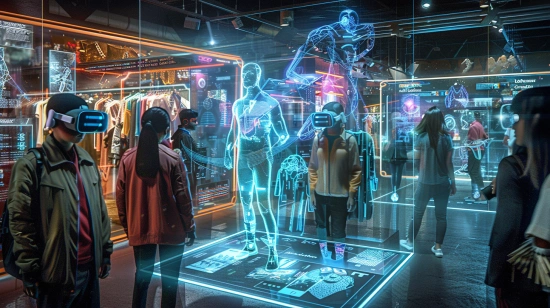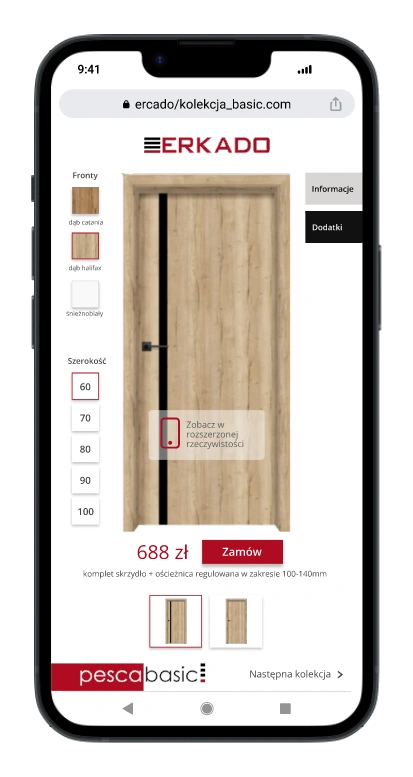How do digital consumer behaviors shape the e-commerce market?

In the era of digital transformation, consumer behaviors have undergone significant changes, redefining the way we make purchasing decisions and interact with brands. In this article, we will examine the impact that the digital revolution has had on the world of e-commerce, analyzing everything from the change in digital consumer behaviors through the online shopping revolution, to the development of technologies such as AR and VR. We will explore how these new technologies have not only changed the way we shop, but also how they create new opportunities for brands to engage and build lasting relationships with consumers. We invite you to read on.
The transformation of digital consumer behaviors in the digital Era
The transformation of consumer behaviors in the digital era is a fascinating phenomenon that has changed the face of commerce. Digital media have altered not just the way we shop, but also our daily habits. In this new reality, where smartphones and laptops have become our windows to the world, traditional methods of shopping give way to digital innovations. Consumers, instead of wandering between store shelves, navigate the spaces of the internet in search of products and services. In this digital era, shopping is no longer just a transaction, but an entire journey – from inspiration on social media, through comparing prices in various online stores, to clicking the "buy now" button. This change not only makes life easier, but also opens new possibilities for interaction with products and brands, giving consumers the power to shape markets with their decisions.
Targeted marketing and digital consumer behaviors
In the digital era, targeted marketing has become a key tool influencing digital consumer behaviors. Thanks to advanced technologies and the analysis of large data sets, companies are able to reach their customers with unprecedented precision. Personalized marketing is no longer just a trend, it's a necessity in a world where consumers expect brands to understand their individual needs and preferences.
The personalization of offers, tailored advertisements, and marketing emails that seem to be written specifically for us – all these make the customer feel noticed and appreciated. Such a strategy not only builds loyalty but also allows for the creation of deeper relationships with consumers. However, this also poses a challenge for brands, which must balance effective targeting with respect for customer privacy. In this subtle game, the key is to understand and respect the boundaries of their consumers, while offering them value that translates into real benefits.
The power of social media influence
Social media have revolutionized the way consumers make purchasing decisions. They have become more than just platforms for sharing photos or updates; they are a powerful tool influencing consumer perception and behavior. Brands, by utilizing social media, can communicate directly with customers, building relationships and loyalty.
Influencers, in turn, have become modern brand ambassadors, shaping opinions and encouraging purchases through authentic, thoughtful content. Consumers, meanwhile, seek inspiration, reviews, and recommendations on these platforms, making social media a key element in the decision-making process. In this ecosystem, every like, comment, or share has value, and companies that can effectively utilize this dynamic gain real influence over consumer preferences and choices.
AR solutions in e-commerce: a new era of interactive shopping
The application of augmented reality(AR) in e-commerce opens a new chapter in interactive shopping, allowing consumers to experience products in a way that was previously impossible. An example is 3D product configurators, which can use AR (but don't have to) allowing customers to personalize and visualize products in their own space. Imagine being able to see how a new sofa fits in your living room, or how a lamp looks on your desk, before you even decide to make a purchase. This combination allows you to visualize your chosen options in the user's real-life environment, which significantly reduces the uncertainty associated with buying online. So AR in e-commerce is more than just displaying a 3D model in space – it's an advanced tool that, through interaction with reality, can increase trust in a product and brand.
An example of a significant step into the future of retail e-commerce is Apple Vision Pro. It is an innovative MR (Mixed Reality; using both AR and VR) product that brings mixed reality to everyday use, offering e-commerce new and advanced opportunities for interactive product experiences. With this device, users can experience an even richer experience during a virtual fitting room or product personalization, which significantly enriches and authenticates the consumer's decision-making process.
Virtual Reality (VR) in e-commerce: immersive shopping experiences
Virtual Reality (VR) in e-commerce is the next step in the evolution of digital shopping. VR offers unique, immersive shopping experiences, transporting consumers to virtual retail spaces. With VR goggles, customers can 'walk' around virtual stores, browse products, and interact with them in a way that mimics real shopping experiences. VR opens doors to new opportunities for brands and retailers to engage customers in a more meaningful way, offering them deeper and more personalized experiences. In a world where the boundaries between reality and the digital world are increasingly fluid, VR in e-commerce is not only innovative but also a strategic way to increase customer engagement and stand out in the market.
Analysis of digital behaviors and empowering the consumer with a focus on user experience
In today's world of e-commerce, consumers have more control than ever before over their shopping experiences. Access to information and technology enables them to thoroughly research, compare, and choose products on their own terms. This requires companies not only to have an online presence but also to provide personalized, intuitive, and satisfying user experiences.
It calls for continuous innovation in areas such as website design, mobile applications, and customer service. Companies that focus on providing a seamless user experience gain customer loyalty and stand out in the market. Thanks to technology, customers now have more power than ever to influence brands and shape their shopping experiences, resulting in an increasingly individualized and satisfying approach to commerce.
Global Market Access
Global access to markets fundamentally changes the digital shopping behaviors of consumers. In the age of the internet, everyone has the ability to purchase products from any corner of the world, which not only expands the horizons of choice but also influences preferences and expectations. Consumers benefit from international competition, having access to a wider range of products, better prices, and unique offers that they won't find in local stores. This change leads to more informed purchasing decisions, where the consumer is no longer limited by geographical barriers. Companies that can effectively establish themselves in the global market, using e-commerce and digital marketing, can achieve success by reaching new customer groups and building an international presence. Global market access not only changes the way we buy but also the way we sell, creating a new, exciting era in international trade.
Summary
The digital revolution in commerce has brought fundamental changes in consumer behaviors and expectations. From the growing role of social media in the decision-making process, through innovations in AR and VR, to the globalization of markets – all these aspects together shape the modern landscape of e-commerce. For companies and brands, understanding and adapting to these changes is no longer just an option, but a necessity to meet the requirements of modern consumers and maintain their market position. As technology continues to evolve, so will consumer expectations, creating new challenges and opportunities for digital commerce. Ultimately, those companies that can best adapt to these changes and use new technologies to create valuable, personalized shopping experiences will be the ones that achieve the greatest success in the future.
Do you like the post? Share to others!

Krzysztof Basista
COO
For years, he has been involved in AR / VR projects ranging from entertainment to heavy industry. Always looking for problem solving through technology.
Contact us
Related posts

In the era of digital commerce, where competition is at an all-time high and customer expectations are rising, the use of innovative technologies is becoming a key factor...

Today, retail stands at the crossroads between adaptation and revolution, facing rapidly changing technological trends. In our article today, we will explore how modern...

Augmented reality (AR) is a technology that combines the physical and digital worlds to create an interactive experience. AR technology is used in a variety of industries...

Have you ever wondered how to make your product stand out in the thicket of competition that is constantly flooding the market? How to make it your novelty that catches...

AR glasses, also known as augmented reality glasses or mixed reality glasses, are wearable devices that overlay digital information onto the user's real environment...

Not so long ago, augmented reality was a science fiction subject, fascinating but distant. Today, it is at our fingertips, literally. Our smartphones...






